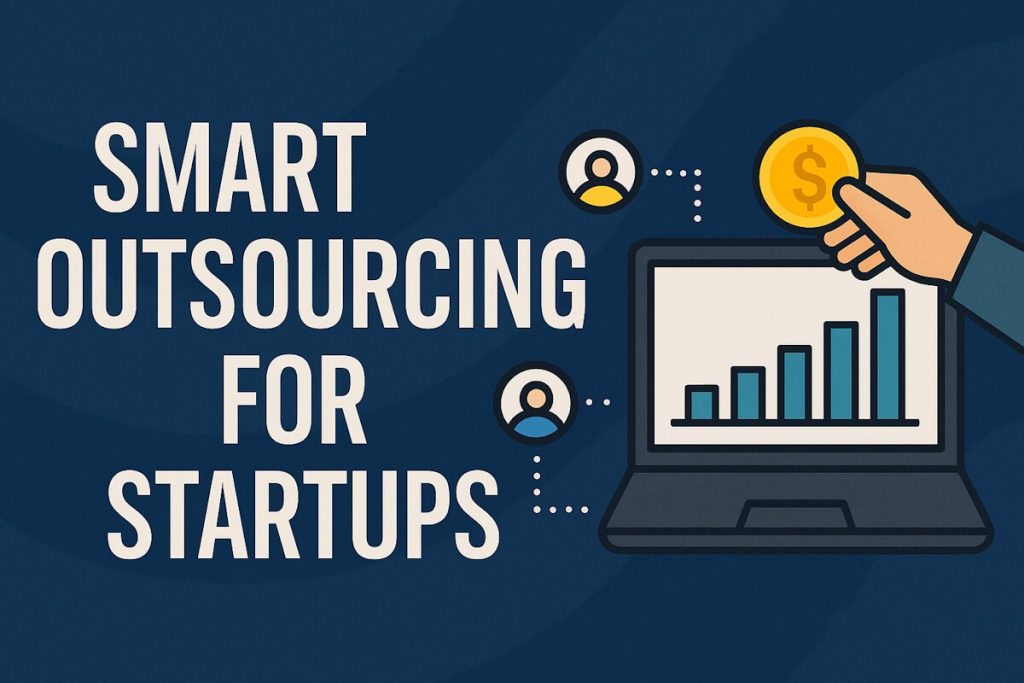Startups have always been about doing more with less. Whether it’s managing lean teams or stretching tight budgets, finding ways to cut costs without cutting corners is part of the game. One of the biggest expenses most startups deal with? Tech. Software development, infrastructure, hiring, maintenance — it all adds up, fast.
But here’s what more startups are figuring out: you don’t need an in-house tech army to build good products. With the right outsourcing model, you can trim your tech costs by over 60%. And not by compromising on quality — just by being smarter about how you get things done.
Let’s unpack how they’re doing it, and what might work for you.
The Problem With Traditional Tech Hiring
Startups don’t just compete for market share — they’re also fighting for talent. Software engineers, data analysts, DevOps specialists… everyone’s in demand, and the prices reflect that.
Hiring a mid-level developer in the US? That could run you anywhere between $100K to $150K annually, not including benefits, taxes, and overheads. And if you’re based in cities like San Francisco or New York, good luck finding someone without a six-month waiting period and a recruiter fee attached.
Then there’s the churn. Developers often leave after a year or two, and every new hire comes with ramp-up time. You’re paying top dollar, and still losing momentum.
This is where software development outsourcing starts to make a lot of sense.
Why Startups Are Turning to Outsourcing Sooner
Ten years ago, outsourcing was mostly for big enterprises looking to cut costs by sending repetitive tasks offshore. That’s not the case anymore.
Now, startups are using outsourcing as a strategic move — to get products built faster, reduce burn rate, and stay lean. The shift isn’t just about saving money; it’s about getting more done without expanding your headcount.
You’re not just hiring “cheap labor.” You’re hiring skilled professionals from regions with a lower cost of living. That difference in cost? It adds up.
The New Outsourcing Models That Are Actually Working
Not all outsourcing looks the same. And the outdated model of throwing specs over the wall and hoping for the best? Nobody’s got time for that.
Startups now have smarter ways to get outside help without the chaos.
1. Dedicated Development Teams
You get a team that works just for you, often in a nearshore or offshore setup. Think of it like an extension of your internal team — they attend your standups, follow your processes, and you manage them like any other employee.
Why it works:
- You’re not paying San Francisco salaries
- No overheads (no laptops, office space, etc.)
- Easier to scale up or down depending on project load
2. Project-Based Outsourcing
Got a feature that needs to be built? Or an MVP that needs to go live in 3 months? You hand over the requirements, and the partner handles everything — delivery, quality checks, even documentation.
Great for:
- Fixed-budget projects
- MVPs, quick builds, or non-core products
3. Staff Augmentation
Need one extra developer to help your in-house team? You “borrow” talent from a third-party vendor. It’s fast, flexible, and you don’t need to go through the full hiring process.
Startups love it when:
- They need someone immediately
- They want to try a developer out before offering a full-time gig
Real Numbers: How Outsourcing Cuts Tech Spend by 60%
Here’s a quick comparison — not theory, just basic math.
Hiring In-House (US-Based) Developer:
- Salary: $120,000
- Benefits & Overhead: $25,000
- Tools, Equipment, Office, etc.: $5,000
Total: $150,000+
Outsourced Developer (Eastern Europe, Latin America, South Asia):
- All-inclusive cost: $4,000/month
Total: $48,000/year
That’s a difference of over $100K per developer, per year. Scale that over a team of 5 or 10, and you’re saving half a million dollars — without compromising on skills or delivery.
That’s the 60% savings right there.
But What About Quality?
Let’s be real — the fear of outsourcing isn’t cost. It’s control. People worry about quality, time zones, and communication gaps.
Here’s the thing: it’s all about who you partner with and how you manage the relationship.
Smart startups don’t just go for the cheapest vendor. They interview teams, test skills, and set clear expectations from day one. And they build communication into the workflow — daily check-ins, shared tools, even overlapping work hours.
Use tools like Slack, Jira, and Loom to stay connected. Do sprint reviews. Treat outsourced teams as part of your core team, not as throwaway contractors.
Where to Outsource? Picking the Right Region
Not all outsourcing destinations are the same. Here’s a quick breakdown:
- Eastern Europe (Poland, Ukraine, Romania): High skill level, good English, strong engineering culture. Prices are mid-range.
- Latin America (Brazil, Argentina, Mexico): Great for US time zones, solid talent pool, culturally aligned.
- South Asia (India, Bangladesh, Pakistan): Cost-effective, wide talent base, but you need strong project management to get the best results.
The key is to match your needs with the right region — not just based on cost, but also work culture and communication style.
Outsourcing Beyond Developers
It’s not just coding anymore. Startups are outsourcing:
- UI/UX Design
- QA and Testing
- Product Management
- Technical Support
- Cloud Infrastructure
Some are even using outsourced ai hiring tool services to streamline how they find and screen talent. Instead of sifting through thousands of resumes, these tools help filter candidates using behavior analysis, skills matching, and real-world performance.
Why waste weeks on interviews when an ai hiring tool can pre-qualify top candidates? Especially when you’re scaling and need 5 developers yesterday.
Outsourcing Isn’t Just a Cost-Cut — It’s a Growth Hack
Look, startups that outsource smartly aren’t just saving money. They’re speeding up development, shortening release cycles, and focusing their internal resources on growth.
Why have your best people building internal dashboards or fixing bugs when they could be working on strategy and customer growth?
Free up your local team for what actually moves the needle — and outsource the rest.
Watch Out for These Red Flags
Before you jump in, here’s what to avoid:
- Vendors who say yes to everything. If they’re not asking hard questions up front, they’re not thinking long-term.
- No process. If there’s no ticketing, no source control, no clear delivery plan — that’s a disaster waiting to happen.
- Poor communication. If it’s hard to get a reply during the sales process, imagine what it’ll be like during a crunch deadline.
Start small, test the waters, and scale when it works. That’s the playbook.
So, Should You Outsource?
If you’re a startup trying to keep burn low, move fast, and still build quality products — yes, outsourcing makes sense.
Not blindly. Not carelessly. But strategically.
Use software development outsourcing to handle the heavy lifting without wrecking your budget. And if you’re scaling your team? Look into options like an ai hiring tool to make the hiring process quicker and less painful.
You’re not cutting corners. You’re cutting out waste.
The Smart Way Forward
Startups that win aren’t the ones who spend the most — they’re the ones who spend right.
So stop thinking of outsourcing as a compromise. Think of it as a strategy. And if done right, it can be the edge that keeps you alive long enough to win.
Outsource smart. Save big. Build better.


